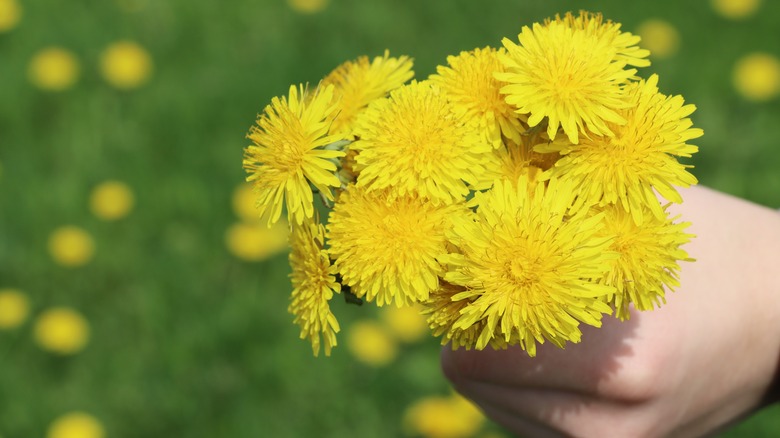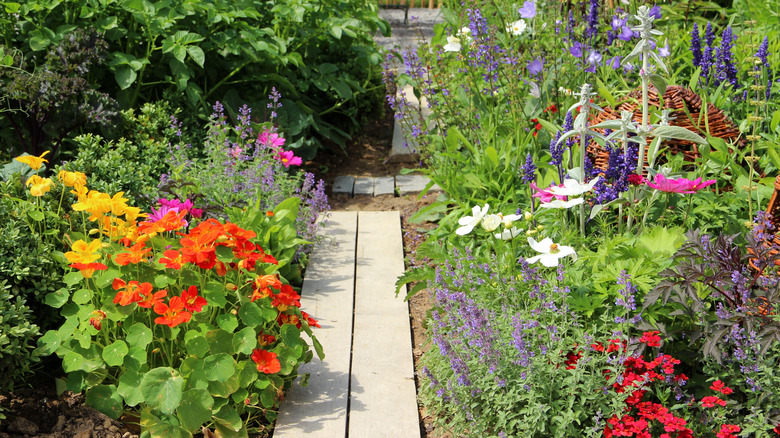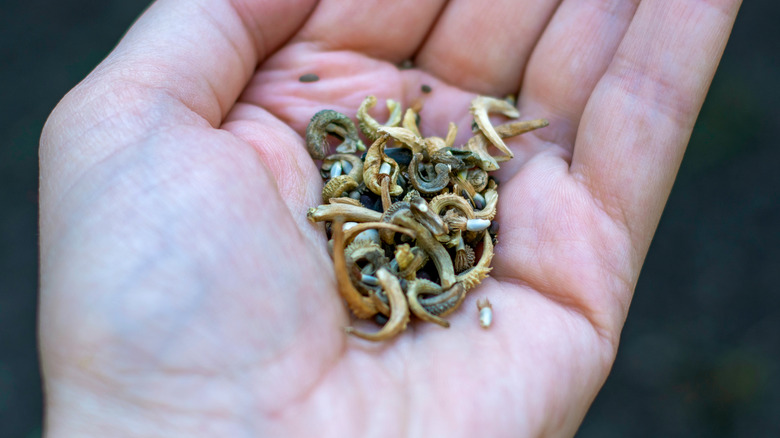You Likely Didn't Realize How Similar Wildflowers And Weeds Really Are
A weed is commonly defined as a little-valued plant that appears where it's not wanted: you likely want to keep weeds out of your garden for good. Wildflowers are considered pretty, and even romantic — ponder the feelings an image of a field of wildflowers induces. As their name indicates, however, wildflowers can be just as unruly as their less-tolerated counterparts. Gardeners and conservationists are starting to consider "wildflower or weed" a matter of perspective. After all, the two botanicals boast undeniable similarities, and it's these blurred lines that make classification complicated.
Commonalities between weeds and wildflowers depend on the species in question. Both may have lots of viable seeds, spreading root systems that are difficult to remove, flowers catering to pollinators or leaves liked by wildlife, and benefits for humans, like being edible or health-promoting. Dandelion is a good example of a plant that falls on either side of the debate, simultaneously loved by bees and makers of dandelion wine and loathed by those wishing to maintain a pristine lawn. Another good example is the daisy-like Bidens alba, which can take over, but attracts butterflies. However, weeds don't always have attractive blooms, which is often what defines a wildflower. Weeds tend to be the most domineering plants in a patch. Wildflowers, however, are rarely invasive.
Getting to the root of the wildflower versus weed debate
The term "wildflower" once referred to a flowering plant indigenous to an area. As globe-trotting migrants took favored or hardy plants with them to new lands (accidently or on purpose), the term has broadened to encompass naturalized and even introduced species. Some North American examples of plants often considered to be wildflowers include hoary vervain, a host for buckeye butterflies caterpillars that readily reseeds but isn't particularly problematic, the daintily flowered, heartily growing groundcovers spring beauty (Claytonia virginica) and wild violet (Viola sororia or Viola papilionacea), fogfruit (Phyla nodiflora), and sunshine mimosa (Mimosa strigillosa).
Similarly, many of the weeds we know and heartily dislike were brought to North America as potherbs or medicinals and, finding conditions favorable, quickly escaped kitchen gardens into the wilderness. The same goes for ornamental plants introduced in the 19th and 20th centuries to satisfy the whims of home gardeners. Some common examples of edibles or garden plants now considered weeds include — and are far from limited to — hairy bittercress and spurweed (equally reviled for their immense seed production and thorniness, making them difficult to eradicate), chickweed, native passion vine (which makes for a great climber in gardens but is considered an agricultural pest plant), and curly dock. And, of course, native plants that dominate places they're not wanted can be considered weeds, too.
How to cultivate wildflowers or weeds in your backyard
Simply put, there's no easy answer to this hotly debated conundrum. Outside of plants determined to be dangerously invasive by state or federal authorities, each plant needs to be examined on a case by case basis; factors like invasiveness, usefulness to wildlife, and dinner-table worthiness change depending on location. Turn a patch of lawn into a field of wildflowers and, in the beautiful chaos that follows germination, the most successful plants will rise to the top. You could call these species weeds. Often, however, what you label a wild plant is a matter of personal preference and tolerance.
Looking for weeds and colorful wildflowers you can grow in your garden? Start by perusing your garden and identifying what you already have. Noxious or invasive plants can be classified as weeds and removed. Consult the USDA's Terrestrial Invasive Plants and State Noxious Weed Seed lists and local county resources for identification advice. Encourage any pretty, beneficial, or non-aggressive visitors. You can also buy wildflower seed mixes, but note that some mixes from less reputable suppliers contain noxious or invasive species. Check the varieties listed on the packet, or, as some garden experts suggest, avoid them altogether in favor of selecting native or naturalized seeds and plants yourself.


